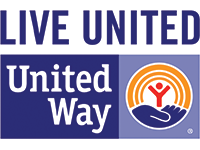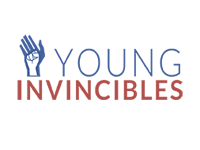Utahns Able to Improve Their Lives Better Than Most of Nation, Data Shows
•Cathy McKitrick, Reporter
When Utahns hit hard times, they are better positioned than much of the nation to find a road up and out, newly released data shows.
Utah rates 16th on the 2012 Opportunity Index, a conglomerate of factors that portray how upwardly mobile residents in 2900 counties around the nation are likely to be.
“Overall, in all indicators, Utah is doing better than average but still has room for improvement,” said Elizabeth Roy, deputy director of Opportunity Nation, a national campaign aimed at expanding economic opportunity and mobility throughout the 50 states.
Utah ranked 16th among the 50 states on the index, in its second year of producing data about jobs and the economy, education, and community health and civic life.
Roy, a Massachusetts native, presented her findings to a group of 165 low-income, community and business representatives gathered Tuesday at Salt Lake City’s Grand America hotel to discuss poverty at a conference titled “A Common Foundation: Creating Opportunity for the Next Generation.”
“The area in which Utah is the strongest is the community health and civic life indicators,” Roy said, lauding the state for its high group memberships — 43 percent compared to the national average of 34 percent — and volunteerism — 42 percent in Utah compared to 26 percent nationwide.
Opportunity Nation partnered with the nonprofit Measure of America to measure three categories, using data from the U.S. Census and Bureau of Labor Statistics.
The first was studying states’ economies, including jobs, wages, poverty, inequality, assets, affordable housing and internet access. The second measured states’ education systems, including the number of children enrolled in preschool, graduation rates and how many students attend college. The third category examined community health and civic life, through comparing community engagement, volunteerism, youth economic and academic inclusion, community safety, access to health care and access to healthy food.
Roy, 32, said that diminished upward mobility and increased income inequality are trends she finds disturbing and personally troubling.
“I wanted to be involved with a campaign that was optimistic, but also pragmatic,” she said. According to http://www.opportunitynation.org, the campaign is a nonpartisan coalition of more than 250 organizations including United Way Worldwide, Jumpstart, Points of Light and others who aim to “restore the American dream by rebuilding the ladder of opportunity . . . one rung at a time.”
The Opportunity Index research identified a key rung on that ladder that the coalition believes merits urgent action —equipping youth with the skills needed to compete in the current and future economies.
Utah received mixed results for the categories the Opportunity Index studied.
According to the 2012 Index, the more affluent Summit County fared the best in Utah, getting an A minus overall — median household income was above average at $79,461; 98 percent of high school students graduated on time and 58 percent of adults 25 years and over earned associate degrees or higher.
Rural San Juan County ranked the worst in Utah with a C minus. Median household income there was $38,076 — significantly lower than the state and national average of $54,744 and $50,046 respectively. Only 29 percent of adults 25 and over had obtained associates degrees or higher.
Utah’s most populous county — Salt Lake County — landed in between with a B minus. Median household income was $58,004, but on-time high school graduates dropped to 86 percent and 39 percent of adults 25 and over held higher degrees.
In Utah, 13.5 percent of youth ages 16 to 24 were “disconnected” — meaning they were not in school and did not have jobs. The national average for disconnected youth was 14.7 percent.
“The great thing about Utah is that our challenges are not as acute as some other states,” said Sen. Stuart Reid, R-Ogden. “We’re also small enough that we can right the ship if we choose to do that.
Reid spearheaded a bill during the state’s 2012 legislative session to study intergenerational poverty and believes that collaboration is important but solutions must center on outcome expectations and accountability.
“There’s been a lot of collaboration for decades but we still have growing numbers of children in intergenerational poverty,” Reid said. “So it has to go beyond collaboration.”
The nonprofit advocacy group Voices for Utah Children sponsored Tuesday’s conference and President Karen Crompton expressed optimism about Utah’s ability to lift up its youth. About one in six children in Utah live in poverty, according to the most recent KIDS COUNT Data Book published by Annie E. Casey Foundation.
“I hope today’s discussion helps reframe the discussion about poverty,” Crompton said. “No child ever did anything to make him or herself poor . . . they’re not responsible for that.”
Twitter: @catmck —
Utah is 16th, but who is first, last?
Vermont came in first with an opportunity score of 64.3, ranking exceptionally high in education and community.
Nevada ranked last with a score of 35.9. Education was by far its weakest category.
Utah made it into the top third of states with a score of 54.9, faring above average in economy and community.
Source: 2012 Opportunity Index








